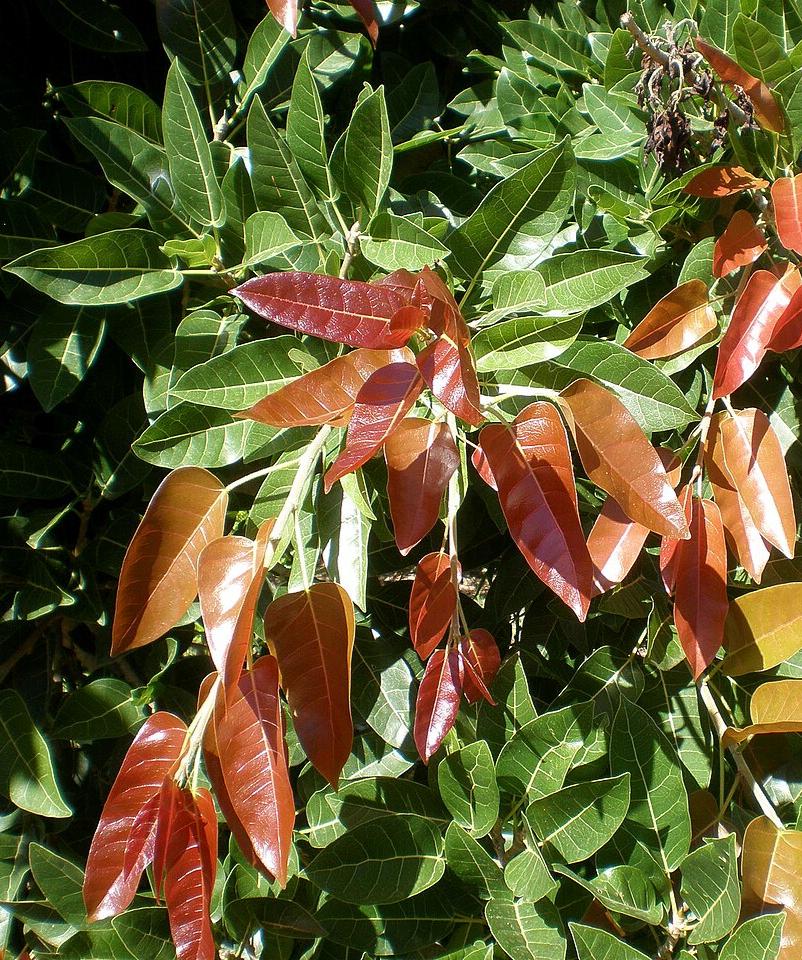Description
Description
The Ficus ingens, commonly known as the Red-leaved Fig, is a striking deciduous or semi-deciduous tree native to Africa and the Arabian Peninsula. Renowned for its smooth, pale gray trunk and vibrant young leaves that emerge in shades of red or bronze, this tree can grow up to 5–15 meters tall. It often grows as a solitary specimen or in rocky outcrops and is well-adapted to arid and semi-arid environments.
The Red-leaved Fig is an excellent choice for landscaping, erosion control, and providing shade, especially in dry regions.
Specifications:
- Height: 5–15 meters
- Width: 5–10 meters
- Native to: Africa, Arabian Peninsula
- Foliage: Red or bronze new leaves maturing to green; deciduous to semi-deciduous
- Growth rate: Moderate
Conditions:
- Soil: Prefers well-drained, sandy, or rocky soils; tolerates poor and shallow soils
- Light: Full sun
- Water: Low; drought-tolerant once established
- Climate: Thrives in arid, semi-arid, and subtropical regions
Additional Features:
- Flowers and Fruits: Produces small, rounded figs that are green turning to red; edible and attract wildlife
- Uses: Ideal for shade, erosion control, and ornamental planting in dry landscapes
- Spacing: Plant 5–10 meters apart for canopy development
- Low Maintenance: Minimal care required; prune to shape or manage size
- Pest Resistance: Naturally resistant; monitor for scale or fig psyllids in stressed trees
- Wildlife Attraction: Provides food and habitat for birds, bees, and other pollinators
- Cultural Significance: Traditionally valued in some regions for shade and as a source of forage
The Red-leaved Fig is a resilient and visually appealing tree, perfect for enhancing arid landscapes with its unique foliage, ecological benefits, and adaptability to tough conditions.
Delivery Information
Delivery Information
We offer flexible delivery options to ensure your tree arrives in perfect condition, whether you're located nearby or on the other side of the world.
- Domestic Deliveries:
We provide reliable delivery services across the country, utilizing our fleet of specialized trucks and train freight networks. Whether you're in a metropolitan area or a remote location, we ensure your trees arrive safely and efficiently. - International Deliveries:
For our global customers, we coordinate delivery via sea freight. With 30+ years of exporting experience, every tree is carefully prepared to meet international biosecurity standards and packaged for safe transport to its destination.
Our team will work closely with you to arrange the most suitable delivery method based on your location, project timeline, and tree size. No matter where you are, we ensure a seamless delivery experience.
Have additional questions? Contact us to discuss your specific delivery requirements!
FAQ's
FAQ's
How are ex-ground trees prepared for delivery?
All ex-ground trees are carefully dug with their rootball intact to preserve the root system and minimize transplant shock. Each tree is stabilized and treated with specialized solutions to promote health during transit. The rootball is wrapped to retain moisture and protect it from damage, and water crystals are added to provide essential nutrients and hydration for the journey. These meticulous preparations ensure your tree remains healthy and ready for planting, whether it’s traveling across the country or overseas.
How long does delivery take?
Delivery times vary depending on your location and the size of your order. Domestic deliveries typically take 1–2 weeks, while international shipping may take several weeks depending on the destination. Contact us for specific timelines.
Are there minimum order quantities for delivery?
For local and nationwide orders, there are no strict minimums, though delivery costs may vary based on order size. For international orders, a minimum quantity is often required to optimize freight efficiency. Contact us to discuss your needs.
Do you provide installation services?
While we focus on the supply and delivery of trees, we can connect you with trusted landscaping partners who specialize in tree installation and site preparation.
Can I visit your farms to select trees?
Yes, we welcome visits to our farms by appointment. Seeing the trees in person allows you to select the perfect specimens for your project. Contact us to schedule a visit.



 Inspection available upon request
Inspection available upon request
 Photos are of example stock
Photos are of example stock
 International Delivery Available
International Delivery Available
 Available For Export
Available For Export
